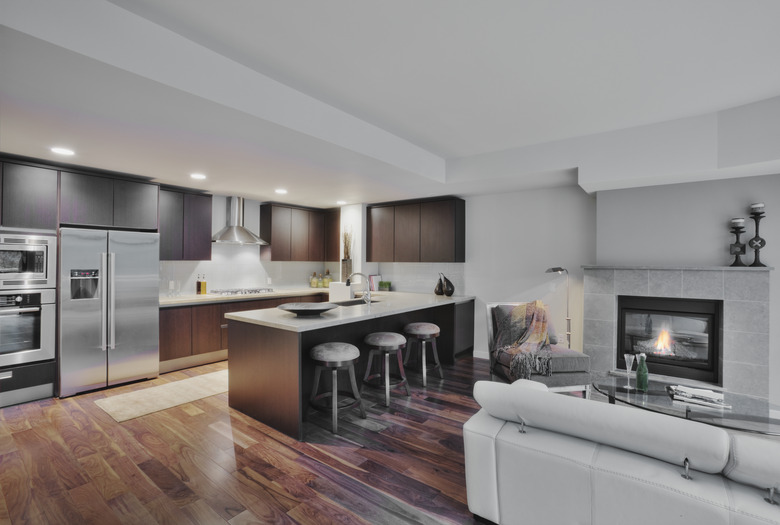Can An Outdoor Exterior Floodlight Be Used Indoors?
Like many home and garden products, floodlights come in both indoor and outdoor varieties, and you may be wondering if the two are interchangeable. Maybe you came home from the hardware store with the wrong box or have some outdoor floodlight bulbs laying around that you don't want to waste. Whatever the reason, learning more about floodlights can help you figure out if you're able to use outdoor floodlight bulbs inside your home.
Tip
Since the main difference between indoor and outdoor floodlights is typically that outdoor bulbs are better equipped to handle elements like rain or extreme temperatures, it's generally okay to use outdoor floodlights indoors.
Using Floodlights at Home
Using Floodlights at Home
There are many ways to use floodlights both inside and outside your home. Thanks to their brightness, they're able to add significant amounts of light to areas you don't want dark. Outside, many people use them for security or to ward off wildlife intruders, while indoor floodlight fixtures are helpful for use in areas like basements or windowless rooms that don't get tons of natural light.
Plus, as Wipro Lighting points out, recent advancements in LED light bulbs have made LED floodlights even more energy-efficient and long-lasting. That means that in addition to having a bright light source, you can also cut back on energy costs in the process.
Indoor vs. Outdoor Floodlights
Indoor vs. Outdoor Floodlights
Floodlights are available for both indoor and outdoor use. Typically, the main difference between the two is that outdoor bulbs are better equipped to handle elements like rain, snow and extreme temperatures, according to Kirby Electric. Sometimes, they're also more likely to have special features that can be helpful for outdoor use, such as 360-degree light distribution and motion detection.
If you're looking for these types of features for floodlight use, you'll have the most luck shopping for outdoor bulbs. It's especially important to make sure you find weather-resistant bulbs if you live in an area with frequent rain or snow. But while you won't want to use indoor bulbs outside in those conditions, you'll have no problem using those tougher, weather-resistant bulbs indoors.
The one thing you might want to keep an eye on is brightness. Some outdoor bulbs, particularly ones designed for security, are brighter than you may like for indoor use. Go ahead and try out the bulb indoors, and if it's too bright, find a new floodlight with a warmer color temperature.
Finding the Right Floodlights
Finding the Right Floodlights
Shopping for the right indoor floodlight sizes, color temperatures and wattage amounts is all about deciding what kind of light you need. You may want bright lights to help keep you awake and concentrating in a home office, for instance, or you might be more interested in warmer, cozy lights for a dining room, as LedsMaster LED Lighting points out.
If you're choosing LED bulbs, they're measured in lumens as opposed to wattage like the 60-watt or 120-watt bulbs you might be familiar with. The equivalent of a 60-watt bulb is about 750 lumens. The higher the wattage or lumens, the more of a bright white look the bulb will give off. For softer hues, look for indoor bulbs with wattage or lumens under 60 watts or 750 lumens. Taking the time to find the right bulb can make all the difference in lighting your room just to your liking.
